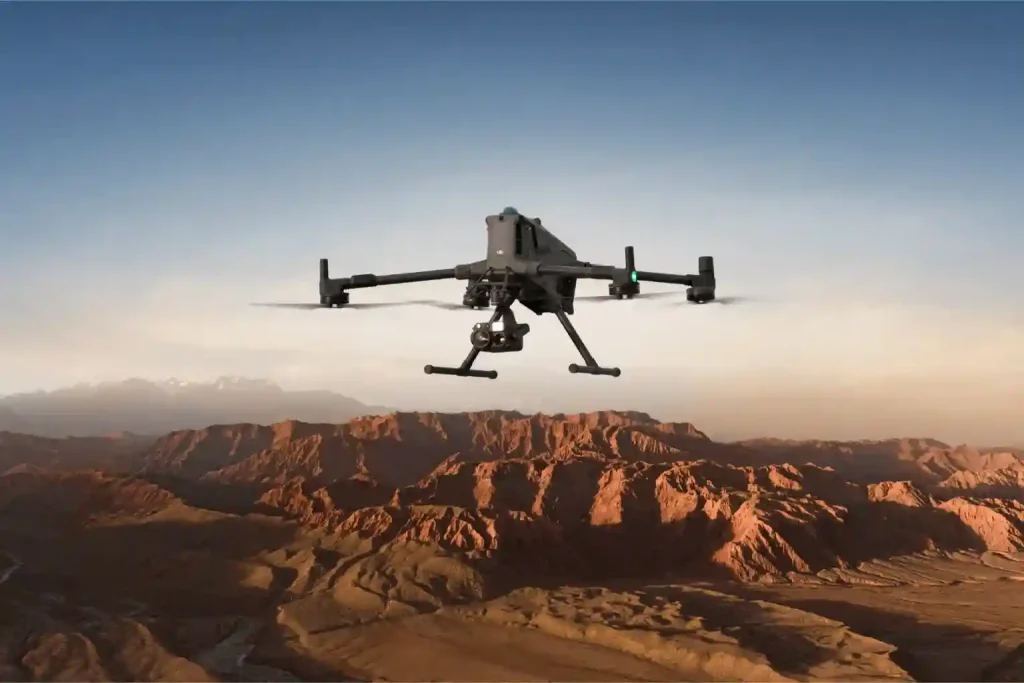Cut Survey Labor Costs by Up to 60% with High-Accuracy Drone Surveys

Precision from the Ground Up A High-Accuracy Drone Survey is the foundation for efficient solar and wind energy projects. In renewable development, the land beneath your infrastructure determines how much energy you generate and how much profit you keep. For solar farms, even small slope errors can reduce sunlight capture. A misalignment of just a few degrees can lead to significant annual energy losses. For wind projects, poorly positioned turbines can experience reduced wind flow and increased turbulence, which lowers their capacity factor and increases wear on components. Saudi Arabia’s Vision 2030 sets ambitious renewable energy targets, with a commitment of $270 billion to solar, wind, and green hydrogen. Mega-projects like NEOM’s 2.6 GW solar plant, designed to power over one million homes, and Dumat Al-Jandal’s 400 MW wind farm, producing electricity for 70,000 households, depend on accurate terrain data to meet strict timelines and performance goals. Why Traditional Surveys Struggle to Keep Pace Traditional ground surveys rely on GPS rovers, total stations, or theodolites, which only collect discrete data points. These require interpolation to form a terrain model, often missing small but important surface variations. A single surveyor can cover only 8–10 km per day in ideal conditions. Large-scale renewable sites often span hundreds of hectares. In such cases, ground-based surveying can take 2–3 weeks, creating bottlenecks in permitting and design. Terrain challenges like steep slopes, soft sand, and rocky outcrops slow crews further, and weather conditions in desert or coastal regions can lead to additional delays. Processing traditional survey data can also take several more days, meaning that valuable time passes before engineers receive usable deliverables. When multiplied across the number of sites under development, these delays can push back renewable energy capacity delivery dates and threaten project profitability. The Technical Advantage of High-Accuracy Drone Surveys A High-Accuracy Drone Survey combines speed, precision, and data richness, creating a digital foundation for renewable project design. Speed and Coverage Platforms like the DJI Matrice 400 can cover 2.5 km² in a single 59-minute flight, mapping over 7.5 km² per day with LiDAR or photogrammetry payloads. This makes them 5–10 times faster than traditional surveys, accelerating design and permitting workflows. Accuracy for Engineering Decisions LiDAR mapping: 2–3 cm vertical accuracy, effective in complex or vegetated terrain. Photogrammetry mapping: 1–5 cm accuracy with high visual clarity. Both are enhanced by RTK GPS to achieve centimeter-level precision. Data Richness for Renewable Applications Drone surveys capture millions of data points, creating dense digital terrain models (DTM) and digital surface models (DSM). This supports: Shading analysis for solar farms to optimize panel tilt and spacing. Slope mapping for wind turbines to ensure stable foundations and optimal wind exposure. Drainage and erosion planning for site stability. Seamless Integration Data integrates directly into CAD, GIS, and BIM workflows, enabling engineers to work with up-to-date, site-specific information and make faster design adjustments. Insert Technical Performance Data Here: Daily coverage capacity, LiDAR vs. photogrammetry accuracy, and processing turnaround time. Measurable Economic Impact Switching to a High-Accuracy Drone Survey is not just a technical upgrade — it is a cost-saving strategy. Lower Labor Costs Drone mapping reduces the need for large field crews. A drone team typically consists of 2–3 operators, compared to 6–10 for a ground survey team. This reduction can cut labor costs by 35–60%, including travel and accommodation savings. Faster Permitting With orthophotos, DTM, and DSM available within 24–48 hours, engineering teams can submit complete site documentation earlier, often shaving weeks off regulatory approval timelines. Earlier Commissioning Shorter survey and permitting timelines bring earlier project start dates. In large-scale renewable projects, even a week’s head start can generate substantial additional revenue from earlier energy sales. Reduced Rework Accurate site data minimizes costly design changes mid-construction and reduces material waste. Insert Economic Impact Data Here: Average permitting time saved, projected value of earlier commissioning for a 200 MW solar farm, and potential cost savings from avoided rework. From Survey to Energy Output With high-accuracy mapping, engineering teams can design with confidence, maximize energy yield, and meet delivery deadlines. For developers, EPC firms, and utility companies, integrating drone surveys early in the project lifecycle ensures faster, smarter, and more profitable renewable energy projects. Talk to us now to schedule you FREE experience firsthand to see how drone surveys can accelerate your next project as every day counts.
